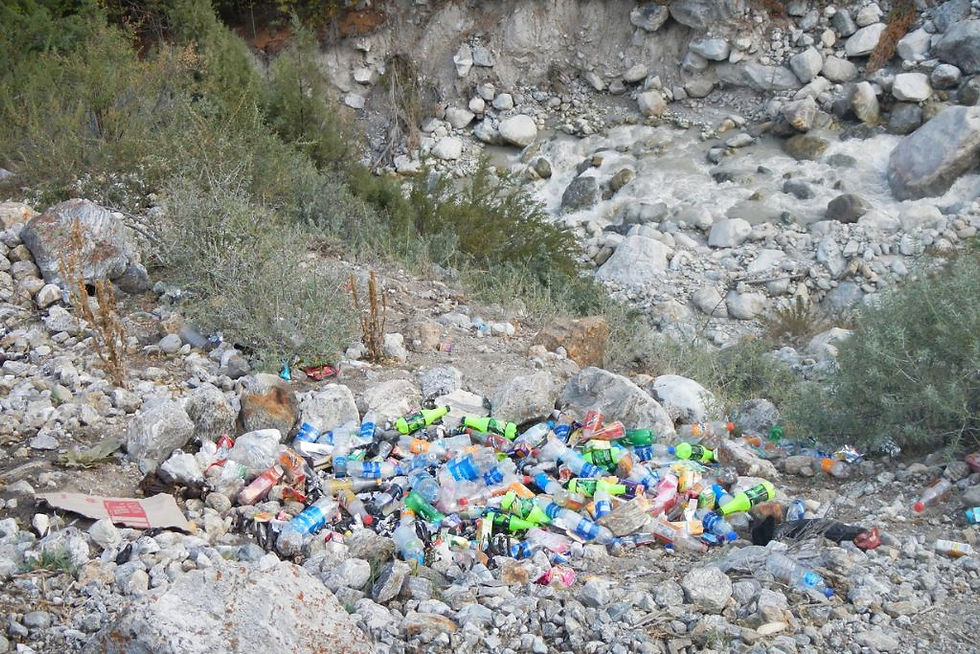Op-Ed: If We Achieve Anything at COP28, It Must Be the Protection of Our Soil
- Constant Tedder
- Dec 7, 2023
- 4 min read
As climate negotiations in Dubai enter their second week, Praveena Sridhar, Chief Technical Officer for the Save Soil Movement, discusses the importance of soil and why world leaders should not forget about it.
—
Soil can be described as the planet’s life support system. It feeds us, hydrates us, purifies our air by absorbing carbon, and is home to 56% of the world’s biodiversity.
Yet for too long, soil has been treated as an infinite, exploitable resource. Now we understand that the planet’s reserve of soil is a crucial natural resource that needs our protection.
That’s why at this year’s COP, the Save Soil Movement, backed by the United Nations Convention to Combat Desertification (UNCCD), is hosting a series of panels, made up of experts from soil sciences, carbon finance, international finance institutions, technology companies, academics, and non profit workers to accelerate the carbon finance access to farmers.
By raising awareness on the fact that our soils are one of our strongest backstops against the impacts of climate change, we hope to influence those policymakers who have the power to protect them.
When many think of soil, they may think of dirt, or even possibly farming. What many will not know is that it is responsible for keeping our rising emissions at bay. Today, there are more than 2,500 gigatonnes of carbon in soil. That is more than three times the amount of soil in the atmosphere, and four times that which is stored in all the plants and animals combined.
Yet soil has the potential to store a lot more. In fact, according to Save Soil’s research, the potential of all the land under current farmer stewardship is a staggering 27% of the carbon emissions reduction needed in order to keep our level of warming below 2C of post-industrial warming.
However, if we fail to protect our degrading soils, then we risk allowing a huge quantity of carbon to be released back into the atmosphere. According to UN estimations, around 50% of the world’s agricultural soil is now degraded. Indeed, without serious action taken by policymakers after this year’s COP, an area the size of South America will be added to the toll if current rates of harm continue. This has serious carbon implications.
You might also like: The Private Sector Must Prioritise Investments in Soil Health
According to the MIT climate portal, some 110 billion metric tonnes have already been released from the top layer of soil, which equates to 80 years worth of present-day US emissions.
Yet degraded soil does not only have implications for our atmosphere. Our agricultural yields are dropping too; a report from the European Commission found that agricultural yields are set to drop by one-tenth as land degradation increases.
Soil not only produces our food but also filters our water. Specifically, topsoil is crucial for the filtration of groundwater, upon which some 50% of the world’s population rely on. The link between soil erosion and water contamination has been well-established, meaning that action at this year’s COP is more crucial than ever.
It should come as no surprise, then, that soil health will play a significant role supporting at least 12 of the UN 17 Sustainable Development Goals.
While COP has been the subject of much media cynicism, at our panel discussions in Save Soil’s ‘Blue Zone’ this year, we see hope. For example, Mr Helmy Abouleish of Egypt’s SEKEM revealed how effective biodynamic farming has been adopted through the “pay-for-ecosystem services” initiative. The program boosted the earnings of the farmers’ livelihoods by some 50%.
Similarly, Mr Joachim Buchmaier of Austria’s HUMUS organization implemented practices such as crop rotation and agroforestry, which helped protect soils against erosion, boost water absorption, and ultimately helped farmers to adapt to climate change. Mr Joachim ultimately argued for a more collective community mindset toward soil preservation, when he said that “the most important thing a person can do in the face of climate change is to not remain a single person.”
Of course, there is no silver bullet for boosting the health of our soils. As stated by Macauley Jones of the World Farmers Organisation: “What works in Egypt won’t necessarily work in New Zealand and won’t necessarily work in the UAE.”
Policymakers must understand that boosting soil health is a global strategy that requires localized tactics. Policymakers should learn from farmers who practice regenerative agriculture and experts about what does and does not work within their own unique agricultural and economic context. They must implement policies that facilitate farmers’ action to keep the soil alive.
If this COP is the one that catalyzes a global movement of pro-soil policy, then even the most cynical journalist will have a hard time declaring it a failure.
This year, by pushing soil firmly on the agenda, we can make sure that the soils that feed us can continue to do the same for our children’s children. As stated by Sadhguru, Save Soil’s founder, “Soil is not our property; it has come to us as a legacy, and we must pass it on to future generations.”
At this year’s COP, we have the opportunity to do exactly that.
Featured image: Isha Foundation
You might also like: On A Mission to Keep the Magic of Soil Alive: An Interview With Sadhguru




Comments